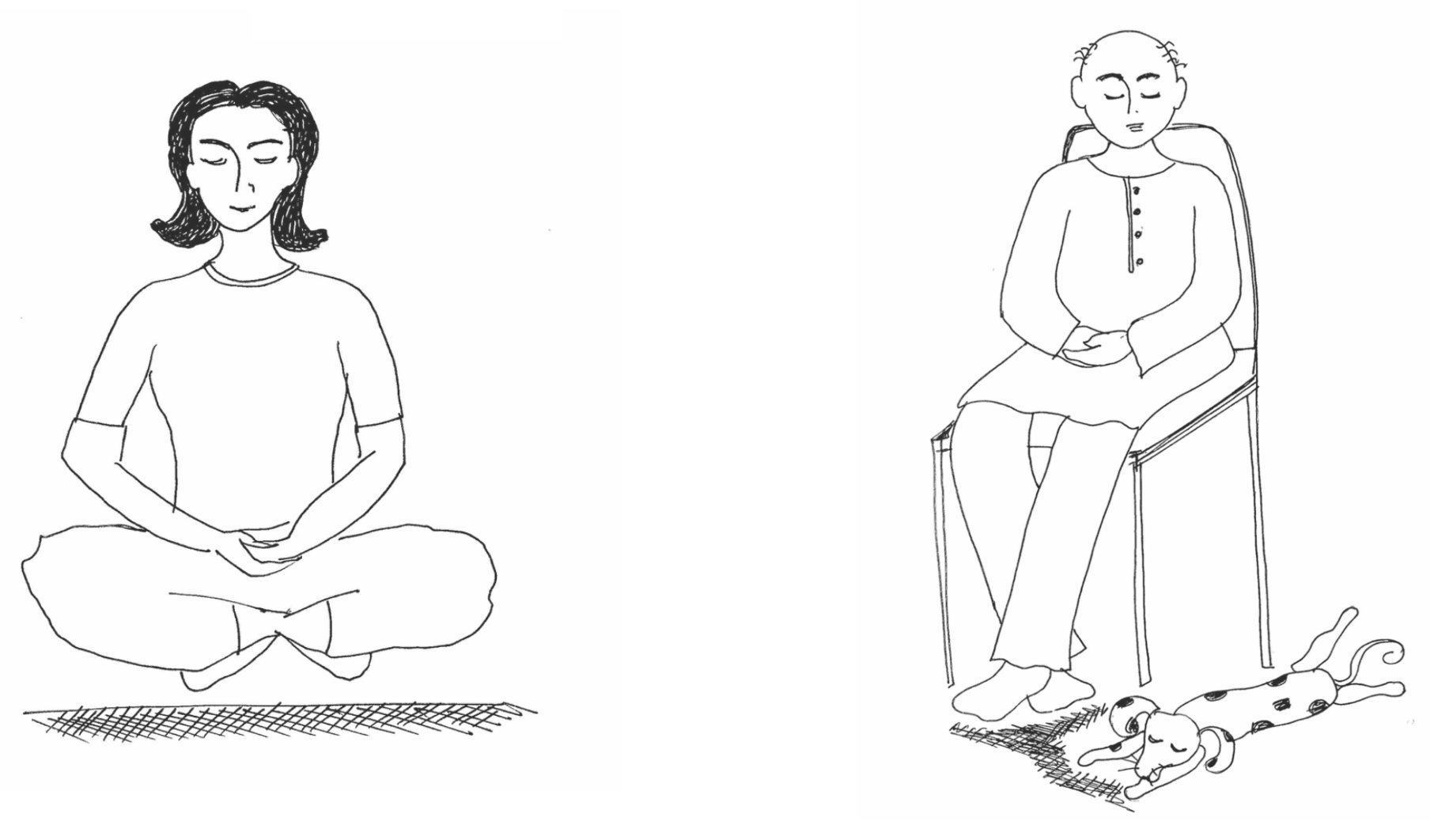Learn the practice of Breath Mindfulness Meditation
This meditation is called Anapanasati. In the Pali language - ‘Ana’ means in-breath, ‘apana’ means out-breath, and ‘sati’ means mindfulness. In English, this meditation on the breath is referred to as a ‘breath-mindfulness’ meditation.
Anapanasati meditation is done by sitting very comfortably, joining both hands, closing the eyes, and paying attention to the in-breath and out-breath. Nothing else is required to be done. There is no need to visualize anything. There is no need to think of any God or guru figure because breath is your guru. Your breath itself is your guide. There is no need to change the rhythm of the breath.
Here are detailed steps for the posture and procedure to do the ‘Breath-mindfulness’ meditation:
POSTURE :
Sit easy and normal on the floor, couch, bed, or chair. The back and neck should be straight but relaxed. You do need to keep them stiff.
You can sit cross-legged (also called the half-lotus position) on the floor or bed or couch. Or you can sit normally on the chair with feet resting on the ground and legs crossed at the ankle. This means the right leg over the left ankle or the left leg over the right ankle.
Clasp your palms – fingers into fingers. Leave your hands relaxed by your sides and your wrists resting on your lap.
If you are wearing spectacles, please remove them.
Close your eyes. Relax your forehead and eyebrows.
Please ensure your posture should always be relaxed. If you feel discomfort in your legs, hands, back, shoulders, neck, or forehead, please feel free to move/relax those parts. But never open your eyes till your meditation session is complete.
For those of you not used to sitting straight for a long time, you can use pillows/cushions to support your back. If you sitting cross-legged on the floor or bed or couch, you can relax and move to a normal sitting-on-the-chair posture (with your feet on the floor).
PROCEDURE:
Once you sit in a comfortable posture as described above, bring your attention to a point where you can feel your breath. Usually, it is the tip of your nose or your upper lip. Now start observing your breath.
Pay attention to your in-breath and out-breath. Your breathing should be normal, natural, and gentle. No specific deep breathing or restrained breathing is required.
Beginners who might have a hard time watching their breath can start with ‘counting the breath’. You can count up to 20 and then slowly start focusing on your breath at your nose. You increase your count after completing one full cycle of inhaling and exhaling.
Some of you might find it easy to observe the movements on your chest or belly as you breathe in and breathe out. You can start by feeling these movements as you inhale and exhale.
Continue to watch your breath. Your focus might be disturbed by thoughts. This is called ‘mind-wandering’. That is normal. As and when you realize you are not focusing on your breath, slowly bring your attention back to your breath.
Be with your breath. Be aware of your body while you continue to observe your breath. Do not try to focus too hard – by stressing your eyes, eyebrows, or forehead. Relax.
Continue focusing your attention on your breath for as long as you sit in meditation. Gradually you will start feeling sensations in different parts of your body. These are due to your increased awareness of energy flows. While you feel these ‘energy currents’ across your body, please anchor yourself on your breath. Continue to watch your inhale and exhale consciously.
You can use soft, instrumental music to help you relax during the initial stages of your practice. Over time you will overcome the need for music or guidance and prefer meditating in silence.
Duration for meditation: Beginners should practice meditation for at least 30 minutes every day. Once you feel you can focus more continuously on your breath with little mind wandering, the recommended duration is as many minutes as your age. For example, if you are 25 years old, then you should meditate at least for 25 minutes.
Time of meditation: Any time of the day or night is good for this meditation practice. For a productive meditation session, you should leave a gap of around 2-hours after a heavy meal. Early mornings are recommended as ideal for a meditation practice
